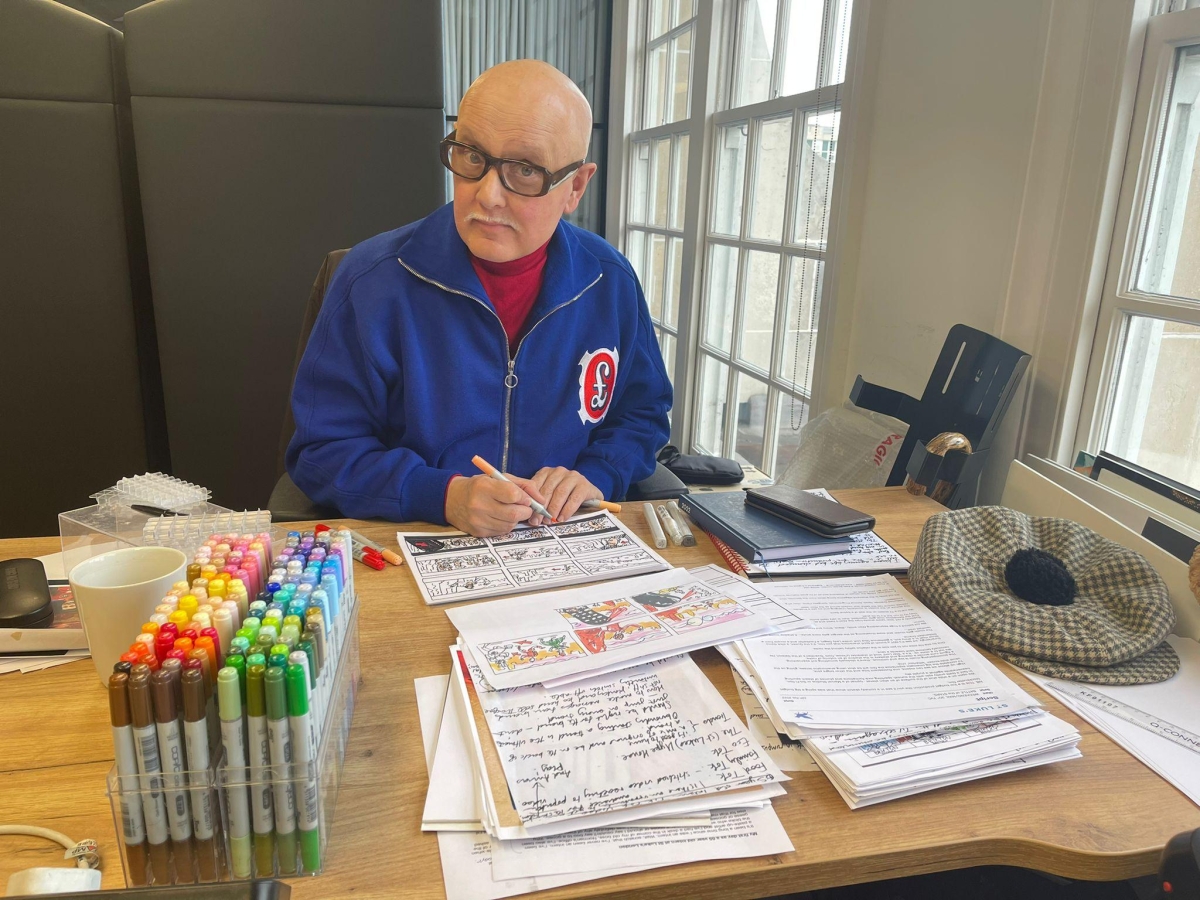The Denton Diaries: How a 65 year old intern learns to 'hot-desk'

It took me a couple of days at St Luke’s to fathom out the ‘hot desking’ system.
In the end I found it was relatively simple insofar as they employed the ‘first come first served’ principle.
Sometimes also referred to as ‘you snooze, you lose’
Like most people of my generation, I get up early, really early. We’re talking the wee small hours.
But it doesn’t matter what time I set the alarm for, I’m always late.
Unfortunately, that meant that I seldom got my favourite seat in the St Luke’s open plan office.
I’d try leaving my set of magic markers and a layout pad on the desk the night before, like our German friends might employ a beach towel to secure a sun lounger by the pool, but sadly it didn’t work.
I’d find my markers neatly placed to the side, and I’d just have to grab them and wander ‘round the office ’til I found a vacant seat.
The unexpected benefit was that I’d usually have a new person/victim to sit next to/get to know.
I didn’t grasp straight away that the wearing of earphones means, “Don’t talk to me, I’m busy”, so some of my friendly chats literally fell on deaf ears.
When I finally worked out the etiquette, I found that they were a right sociable bunch and more than willing to point a veteran/geriatric creative in the right direction.
Which was just as well really, because my experiment of just turning up with a bunch of marker pens and a pad was proving to be a bit of a challenge…
I’d been given a couple of briefs to work on, alongside some other creative teams, however it was only in the first presentation to Richard Denney (St Luke’s esteemed ECD) that I saw the importance of a hefty deck to back up your ideas.
Everyone else had these elaborately constructed decks, with photographic reference carefully plucked from the internet.
I had to rely on my own enthusiastic presentation combined with holding up a couple of scribbled ‘key' frames to get my ideas across.
It probably didn’t help that I’d written a 90 second script, despite the requirement (I think they call them ‘deliverables’ now) being a poster campaign (or O.O.H. which apparently means ‘out of home’).
Well, I had tried my hardest to get to the end of an extremely long email chain to remind myself of the brief… I never made it. I got lost along the way.
Fortunately, I’d remembered the proposition, and I just assumed a commercial was needed - I knocked out what I thought was one of the best spots I’d ever written.
Oh well, there’s plenty more where that came from! And as it happens, the idea was relatively easy to convert into a poster campaign. Phew!
A very helpful young team, Jordan and Danny, volunteered to make a deck for me for the next presentation.
That was bloody handy because I couldn’t have done it by myself.

There was a real collaborative spirit, not just amongst the creative department but throughout the whole company.
It took a bit of getting used to for an ex-creative who used to jealously guard his ideas, planning and scheming the right time to reveal them for maximum impact.
It seems the modern way is to share every creative thought and anyone can pitch in with a suggestion along the way.
I had to bite my bottom lip a couple of times when improvements to my campaign were suggested. If it wasn’t for the fact that the work was made significantly better I probably would have got the right, royal hump.
I got to love the collaboration bit but on reflection I wondered if the more you give up ownership of an idea the less likely you might be to fight for it when necessary.
Maybe that’s why fighting seems a bit out fashion now?
I don’t know, more questions…
Ideas still seemed to be popular though, it’s just that there were a lot more of them on the table.
And there were tons more meetings (usually on Zoom) to discuss them.
Obviously it was a tad awkward to try to tune into a Zoom meeting armed with just a layout pad, so I often had to park myself on someone’s shoulder and share a screen as the ‘little head in the corner’.
In between the meetings, the projects kept coming in, and I found myself not only writing scripts but writing headlines for a poster campaign, while simultaneously being briefed on how Tik Tok works.
What fun.
Every now and then a young (they’re all young compared to me, obvs) team would ask my opinion about a bit of art direction, or how to structure a storyboard.
I can see how useful someone of my generation might be in a modern agency.
I’m like the old bloke who works in B&Q—I know where the socket-head domed screws are.
At the end of the internship, I was amazed at how speedily the month had flown past.
Having had some good long chats with some senior people from most departments, I felt that I was just getting the hang of ‘how it all works now’.
And as a director, it’s certainly given me a few clues as to how to pitch for a commercial in the future.
When I put my next treatment together, it’s going to have fewer words but set in much bigger type and I’m going to call it a deck.
If you enjoyed this article, you can subscribe for free to our weekly email alert and receive a regular curation of the best creative campaigns by creatives themselves.
Published on:



